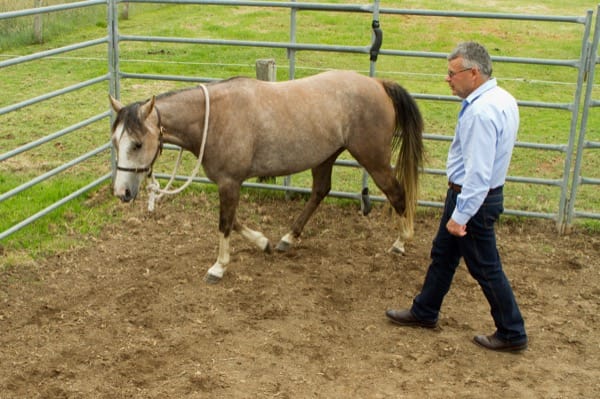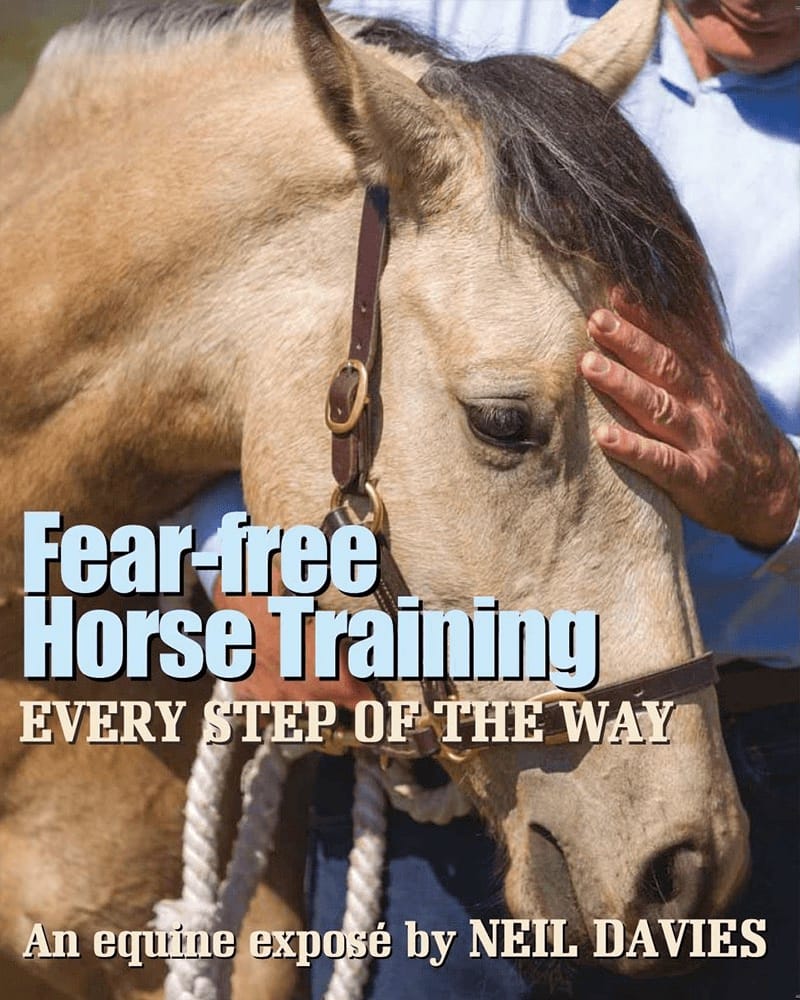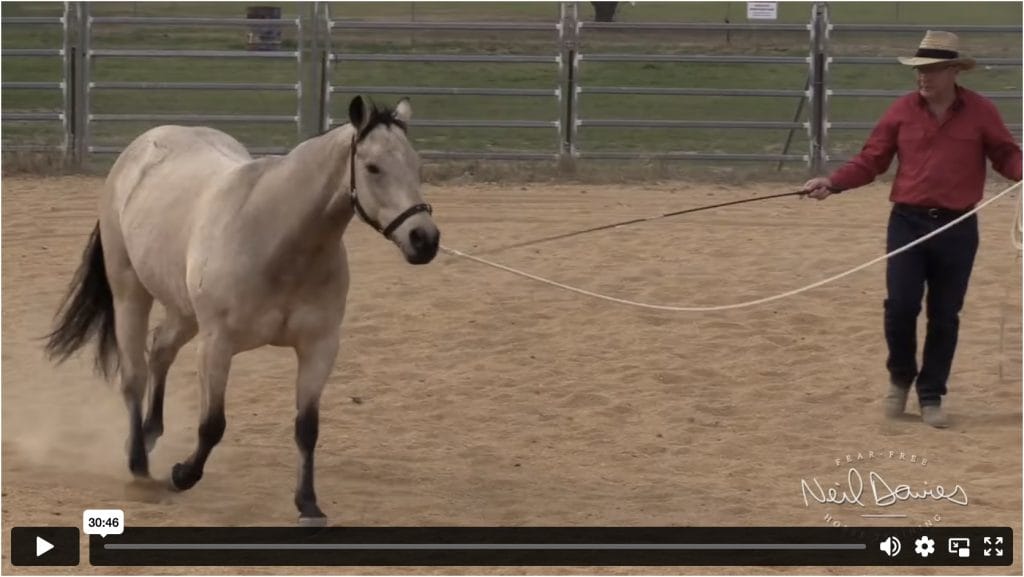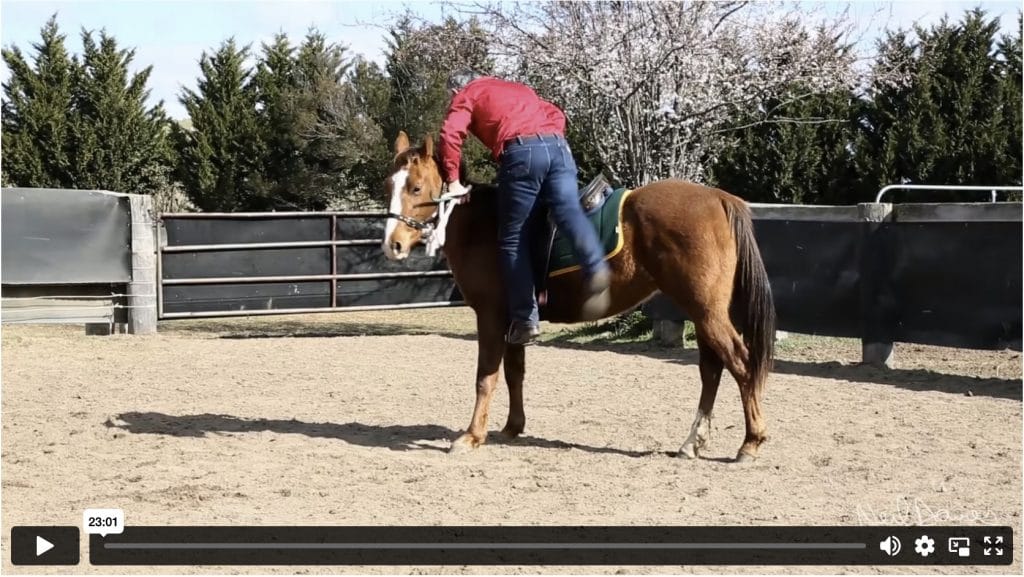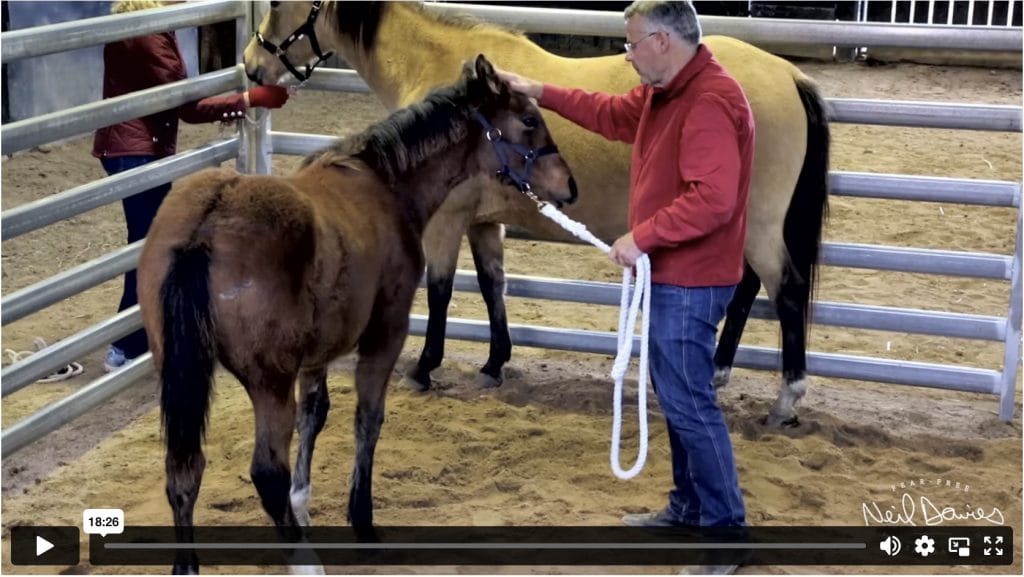There are many stories about round yards and chasing horses.
One story often told is that if you chase your horse in a round yard, you enter the ‘mystical’ world of the horse herd.
You become the dominant horse in a magical herd of two.
When your horse eventually comes to you, it’s supposedly because he’s submitted and accepted you as his leader.
We’re told that a horse runs at first because he thinks he is the prey and you are the predator.
If at any time the horse stops running and looks toward the ‘predator’/human, the human turns away and supposedly becomes non-threatening and submissive.
Next, we’re told that the human becomes the alpha horse who’s mission in life is to chase those lower in the ‘pecking order’ to ‘put them in their place’ and let them know ‘who’s boss’.
When the horse finally comes to the trainer and follows him, we’re told it’s because the ‘alpha horse’/human/trainer has allowed the horse back into the herd.
And voila!
The human turns into the leader of the herd and the horse submits and follows.
In this fable, the human starts out as a predator, then turns into an ‘alpha horse’ and, last but not least, morphs into the leader of the herd.
In reality land, a horse chased in a round yard has two options.
He can run or he can approach the trainer and not run.
Think about it.
The only way any horse can relieve the stress of running is to come to the trainer.
A frightened horse may run to the point of exhaustion rather than approach the trainer.
At some point however, most horses will work out that it’s easier to follow the trainer than to keep running around the fence.
That’s it, period. End of story.
Now here’s another tale to ponder.
Imagine your child’s first day of school and the teacher says,
‘Today we’re going to learn our times tables. Johnny, tell me the answer to five multiplied by seven.’
Obviously, Johnny doesn’t know the answer.
The teacher takes Johnny to a round yard and orders him to run around the fence.
‘Tell me the answer to five times seven Johnny.’
‘I don’t know Miss. Is it ten?’
‘No it isn’t. Keep running,’ says the teacher.
After a few minutes the teacher asks again, ‘Five multiplied by seven?
This time Johnny tries twenty.
‘Keep running Johnny,’ says the teacher.
Johnny starts to sweat and puff and wishes that he knew the answer.
The teacher asks again, ‘Five multiplied by seven equals?’
Johnny has no idea what the teacher wants him to say but he’s had enough, he wants to stop running.
In between gasps, he starts saying numbers at random.
Eventually he flukes thirty-five.
‘Good work! That’s the right answer.
You may stop running Johnny.
Come stand with me and have a rest.’
Johnny may have learned that five multiplied by seven is thirty-five.
However, he hasn’t learned his times tables.
When he’s faced with a different problem, he won’t know the answer.
He certainly won’t look forward to coming to school tomorrow.
It would be cruel to use this approach with a child.
Yet it’s used by horse trainers all over the world.
Horse are chased and stressed when they don’t know the answer and no one seems to care.

